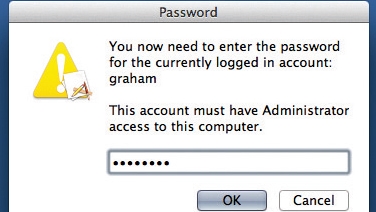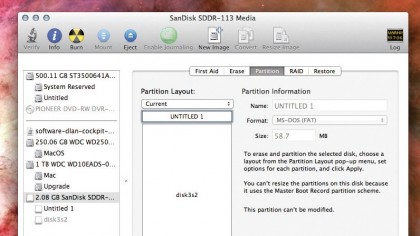How to set up your Raspberry Pi in Mac OS X
Get some Apple in your Raspberry Pi
You will now be asked to enter your password. You need to make sure your current user has Administrator privileges, which is another concept that's used by Linux.
Most default OS X users are also administrators, so just enter your password. Another window will pop up saying you need to wait for the device to be unmounted.
Devices need to be inaccessible from the desktop for them to be written to at the low level Raspbian requires, so wait for the desktop icon for your SD card to disappear before clicking 'Continue'.

If you've chosen the correct device, you should see its read/write LED flicker as data is being written to the card.
You can now relax – you got the correct device, and you'll need to wait a while for the data to be written. On our machine, this took about 15 minutes.
The progress indicator is hidden behind the small rotating gear hidden within the menu at the top of the screen.
Check the installation
When the process has completed, your card should be ready for its first live test within your Raspberry Pi. But before you do, it's worth taking a look at the card's layout from your desktop.
Are you a pro? Subscribe to our newsletter
Sign up to the TechRadar Pro newsletter to get all the top news, opinion, features and guidance your business needs to succeed!
This way you can be sure the writing procedure has worked and avoid any unnecessary troubleshooting when it comes to booting up the Pi.
Firstly, after the process has finished, you should see a new drive mounted on to your desktop. This will contain only about 18MB of data, and Finder will claim there's still only 41MB free.

But this is because you're only looking at the boot partition, as this is the only partition OS X can now read. The other partition is formatted with a Linux filesystem, and if you want to see it, launch Apple's excellent Disk Utility application.
This tool allows you to format and re-partition drives, and if you select the remote storage drive from the left panel and then select 'Partition' from the tabbed functions on the left, you'll see a vertical layout of the partitions on the drive.
There should be two – the UNTITLED boot partition, plus the other, containing Linux. There should also be some unused space, which you'll be able to take advantage of after you've booted into Raspbian and used its configuration tool for resizing Linux into any unused space.